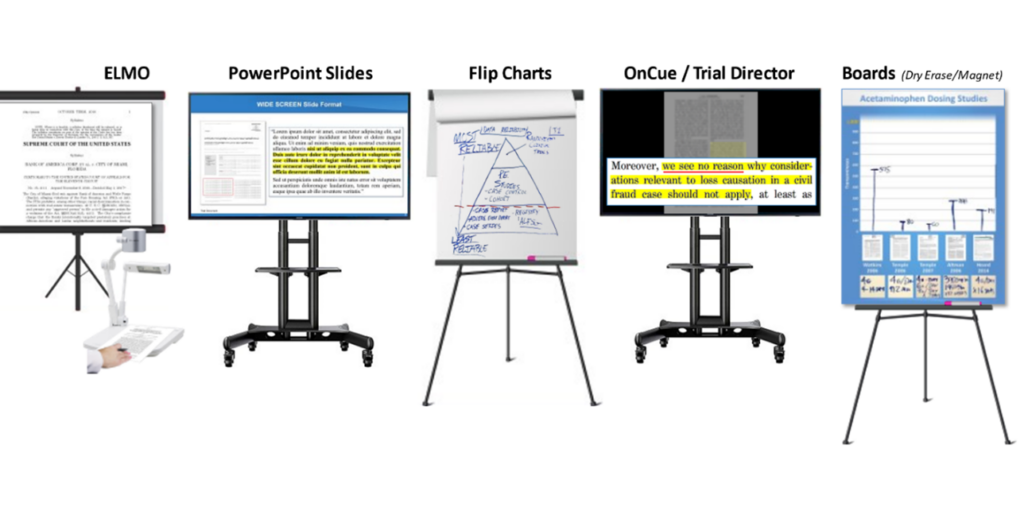Exactly How Trial Presentations Enhance Your Disagreement and Persuade Jurors
Trial discussions function as a crucial device for improving legal arguments and persuading jurors. By incorporating aesthetic help, narrative structures, and emotional engagement, lawyers can produce a compelling case that reverberates on numerous levels. The tactical use visuals not just clears up complex information yet likewise catches jurors' attention extra successfully than words alone. The art of narration plays a similarly vital role in changing factual proof into an engaging narrative, forming jurors' understandings. Understanding these components can considerably influence test outcomes, increasing the question of just how each component adds to this elaborate dynamic.

Importance of Aesthetic Help
Aesthetic aids play a vital function in enhancing the performance of trial discussions, as they can substantially enhance target market interaction and retention of information. In the context of a test, where jurors are tasked with handling complex details, visual help serve to streamline and clarify bottom lines. Graphes, graphs, and pictures can share data and principles that may or else bewilder or perplex jurors, allowing for a much more straightforward understanding of the proof provided.
In addition, visual aids aid in preserving juror interest throughout the proceedings. By damaging the uniformity of spoken testimony, these tools can punctuate important arguments, making them more remarkable. Efficient visual help can additionally evoke psychological feedbacks, which can be critical in convincing jurors to straighten with the presenter's narrative.

Crafting Engaging Narratives
An engaging narrative is vital in test presentations, as it acts as the foundation of reliable persuasion. It allows attorneys to weave together realities, proof, and emotional elements into a systematic tale that resonates with jurors. This narrative structure allows jurors to recognize the intricacies of the case while directing them with the lawyer's debate.
To craft a compelling narrative, attorneys should concentrate on quality and comprehensibility. In addition, the usage of brilliant summaries can produce mental images that aid jurors envision the occasions, making the narrative much more memorable.
Moreover, incorporating vital styles throughout the presentation reinforces the core message and help in retention - trial presentations. The story must not only share information yet likewise evoke a feeling of justice, highlighting the risks included. Ultimately, a sound story fosters a link in between the jurors and the situation, positioning the lawyer's disagreement check as both reliable and compelling, therefore boosting the possibility of a favorable decision

Involving the Jury Psychologically
Efficient court engagement rests on the attorney's capacity to get in touch with jurors on a psychological level. This connection can significantly affect jurors' perceptions and their utmost decision-making. Making use of sob stories allows lawyers to humanize the case, transforming abstract lawful concepts into relatable experiences. By offering real-life stories or testimonies, lawyers can evoke empathy and concern, fostering a deeper understanding of the concerns at stake.
Aesthetic aids, such as photographs or videos, can better boost emotional interaction, giving jurors with vivid representations of the situation's human aspects. Crafting a story that highlights the battles and accomplishments of the individuals involved guarantees that jurors see past the lawful debates and identify the human effects of their decisions.
Furthermore, tone and body movement play a crucial function in communicating feeling. A lawyer's enthusiastic shipment can reverberate with jurors, strengthening their psychological financial investment in the situation. It's crucial to stabilize psychological allures with valid proof, making sure that jurors really feel forced to review act while staying grounded in the reality. Eventually, an emotionally engaged jury is more probable to be encouraged, making psychological connection an important component of effective test discussions.
Structuring Your Presentation

The body of the discussion ought to be logically fractional into bottom lines, each supported by engaging evidence. It is helpful to utilize this content narration methods to weave facts right into a story that jurors can quickly follow. Aesthetic help, such as charts and video clips, can enhance understanding and engagement, aiding to highlight crucial items of evidence.
Real-World Instance Studies
Checking out real-world case researches offers very useful insights right into the art of test presentations and persuasion. The site instance of "O.J. Simpson v. Individuals of The golden state" highlights how aesthetic help and engaging narratives can persuade court perceptions. The defense team properly employed a technique that integrated prominent professional statements with multimedia discussions, which captivated jurors and ultimately influenced their choice.
One more significant instance is the "McDonald's Coffee Instance," where the complainant's lawyers used visuals pictures of the injuries endured by Stella Liebeck. trial presentations. This plain visual evidence played a vital function in communicating the intensity of her burns, causing a considerable jury award. Such cases demonstrate that impactful test discussions commonly depend upon the efficient combination of visuals and storytelling to evoke psychological feedbacks from jurors
Moreover, the "Casey Anthony Trial" highlighted the significance of narrative coherence and credibility. The prosecution's failure to develop an engaging timeline decreased their persuasive power, emphasizing the need of a well-structured presentation. Analyzing these instances discloses that effective test presentations require strategic preparation, psychological engagement, and the capacity to resonate with jurors' values and ideas.
Final Thought
Test presentations substantially enhance disagreements and encourage jurors through the critical use of visual help, compelling narratives, and psychological involvement. A well-structured discussion equilibriums emotional charms with valid evidence, eventually reverberating with jurors' worths.